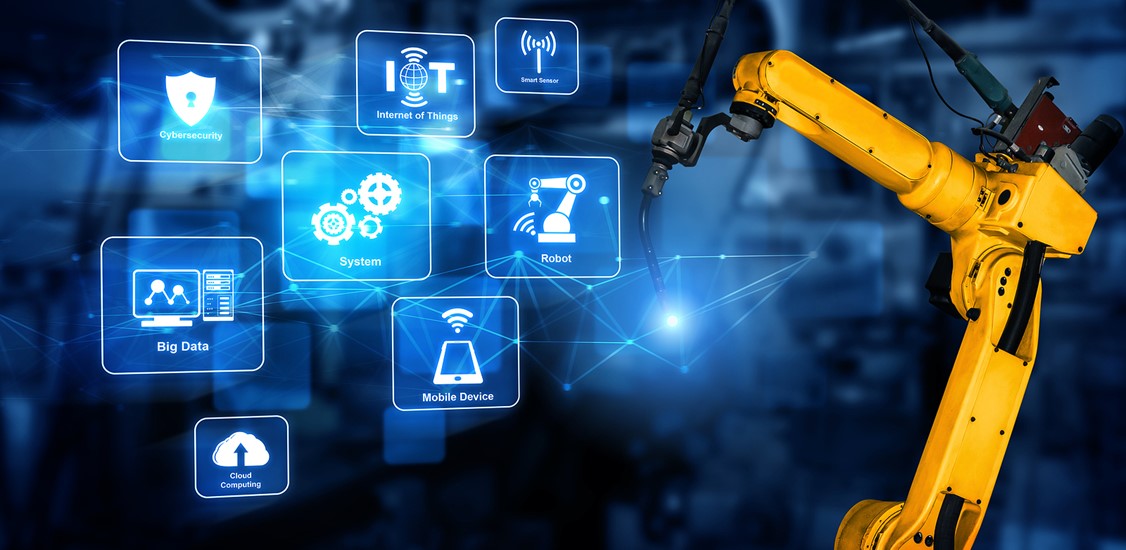Manufacturers are utilizing increasingly sophisticated Industrial IoT (IIoT) capabilities—and as well they should, given the competitive demands of keeping pace with innovation and efficiency in this industry. But these more modernized factory environments are putting ever more demand on edge computing architecture and applications. Effectively utilizing an array of connected robots, sensors, cameras, calibrators, and the like requires instant data processing to be effective.
As reliance on the edge deepens, CIOs and other technical leaders within the manufacturing industry need to carefully consider how to build out their longer-term technology strategies. They need to ensure that edge applications remain always-on and, they need to avoid bringing down their networks. This is where low-code strategies offer an opportunity to modernize edge infrastructure with lighter-weight code. With a low-code approach, manufacturers can scale and continue to tap into the ever-greater troves of data generated from IIoT applications, while still maintaining the low-latency network connectivity needed to make split-second decisions on the factory floor.
Powerful AI-driven edge applications carry intensive data demands
AI is at the heart of the most impactful edge deployments, and the relative capabilities of those AI edge applications are a function of data. Accurate AI behavior requires large volumes of data and the best results require, well, even more. But the latency of data connectivity—from IIoT decision-making mechanisms in the factory, to the local network, to the cloud and back - becomes an issue when data isn’t streamlined and sized efficiently. By their nature, IIoT devices deliver value by making cost-saving decisions in real-time.
Manufacturing CIOs face availability requirements unparalleled in other industries. Whereas CIOs in other fields can often pursue and deploy technology where brief gaps in uptime - even just minutes a year - are acceptable, manufacturing CIOs don’t have that luxury. If factory lines cease to move because overburdened edge applications miss a key warning sign, each minute of downtime can cost industrial organizations hundreds of thousands of dollars in lost production. Because they have zero margin for error, manufacturers are welcoming advanced edge servers with GPU-centric architectures, along with improvements to AI itself that make edge AI applications all the more resilient and reliable.
Low-code enables IIoT data and application efficiency
The IIoT calls for robust data-intensive applications that won’t crash networks. Low-code application development offers high-utility lightweight code that matches these parameters. With low-code development, developers leverage drag-and-drop interfaces in which advanced technology capabilities including sensors, AI/ML, and analytics are contained in abstract modules. Developers can then assemble these modules to build complete applications. Whereas traditional IIoT application development calls for intensive time and resource investments and expert talent, low-code offers CIOs a strategy where their existing developers can harness more advanced technologies than their skillset might otherwise have.
In practice, most manufacturers rely on single-purpose edge computing systems with very limited computing power, which must communicate with factory machines that feature legacy Windows or Linux operating systems. Forcing these systems to run bloated and burdensome code is asking for trouble. At the same time, applications based upon traditional open source tools tend to be heavyweight and especially taxing on older systems. While CIOs would love to replace legacy hardware now, those modernization initiatives are often further down the roadmap. Lightweight low-code is the ideal solution for these use cases, as they work well with legacy operating systems and apply little stress to limited edge computing systems.
Implement edge infrastructure best practices
Edge modernization efforts can go sideways without the right principles in place. Projects that overrun their budgets and fail to deliver compelling advantages often rely on a single vendor’s packaged solutions rather than best-in-breed options. To avoid vendor lock-in and unify technology silos into a connected ecosystem, utilize low-code to introduce connective middleware. Carefully balance out on-prem and cloud infrastructure, with an eye on leveraging components that are simple to package and redeploy as you scale.
Manufacturing features a “Golden Data” opportunity
The data produced by manufacturing systems is uniquely relevant and actionable “Golden Data.” Whereas data collected in sectors such as retail is more often laden with irrelevant noise and bias, manufacturing data is sourced from machines that directly and accurately communicate their status, and is thus far more valuable.
Using lightweight low-code AI/ML application processes in edge computing systems offers the opportunity to capture and perform analysis on that data in a more passive manner that leaves manufacturing systems undisturbed. If and when appropriate, those same lightweight processes can also more quickly and efficiently take decisive action to protect manufacturing systems and avoid downtime.
Additionally, manufacturing data requires close security safeguards, with proprietary ownership of data often divided among different entities, such as the OEM and the contract manufacturer. Edge devices leveraging distributed processing can contribute to security protections by segmenting data by its owners, even while processing essential data at the edge and passing the remaining data to the cloud.
Manufacturing CIOs: take the lead in edge modernization
Edge modernization is a tremendous opportunity for manufacturing CIOs, but one with real risks. By designing a strategy that addresses the IIoT’s data challenges while capitalizing on its “golden data” strengths, leverages lightweight low-code, and adheres to best practices, manufacturers can assure their uptime and even boost productivity.






















